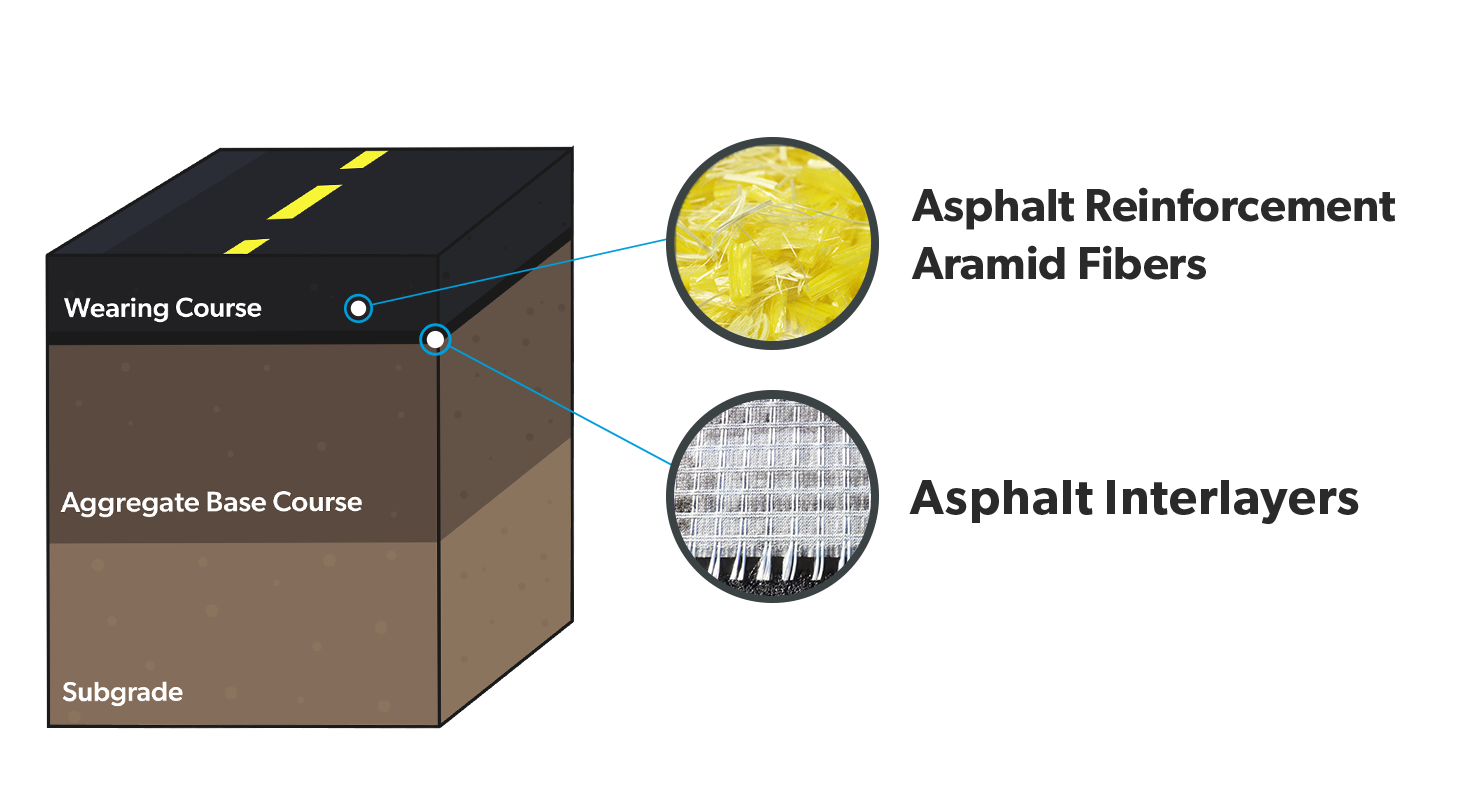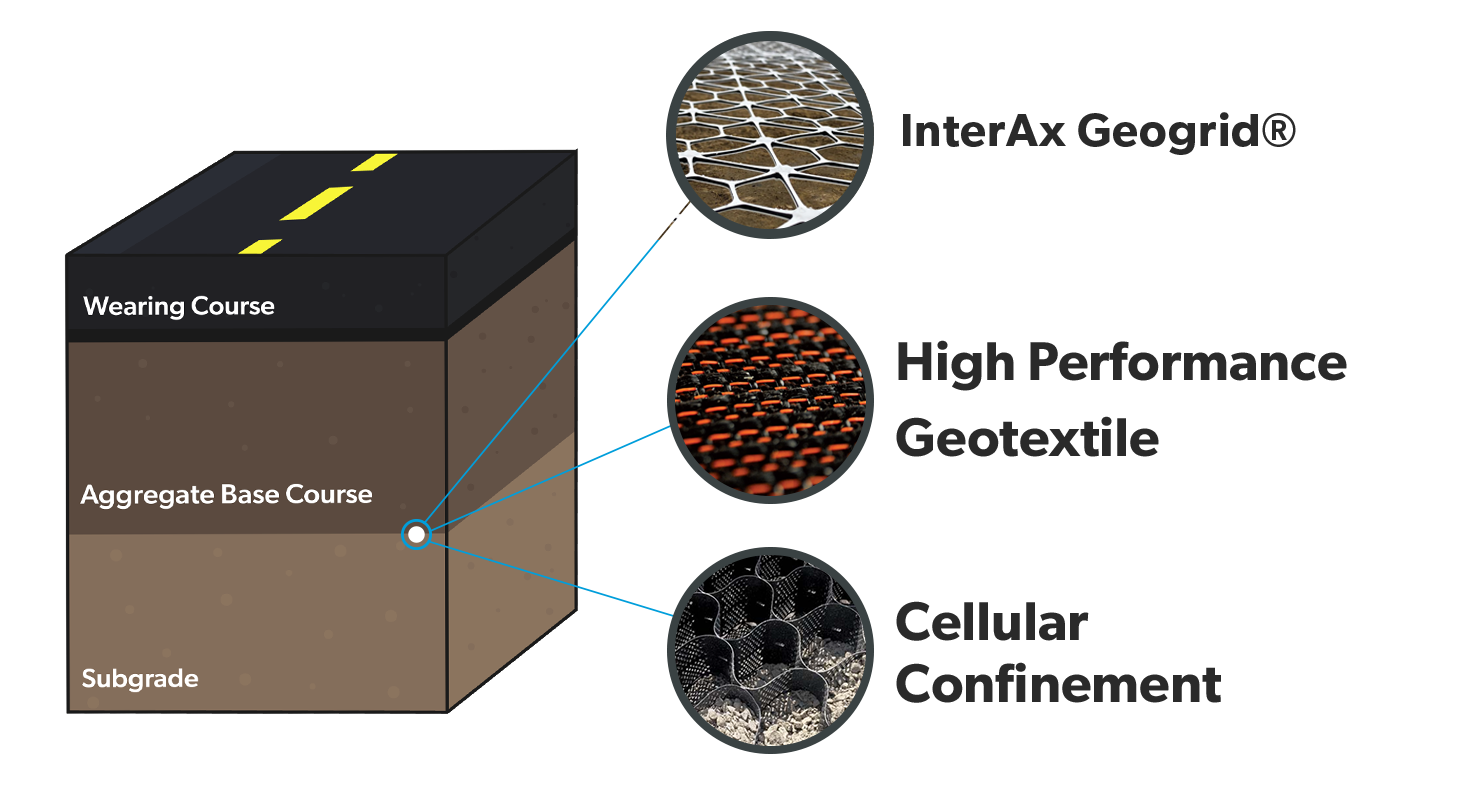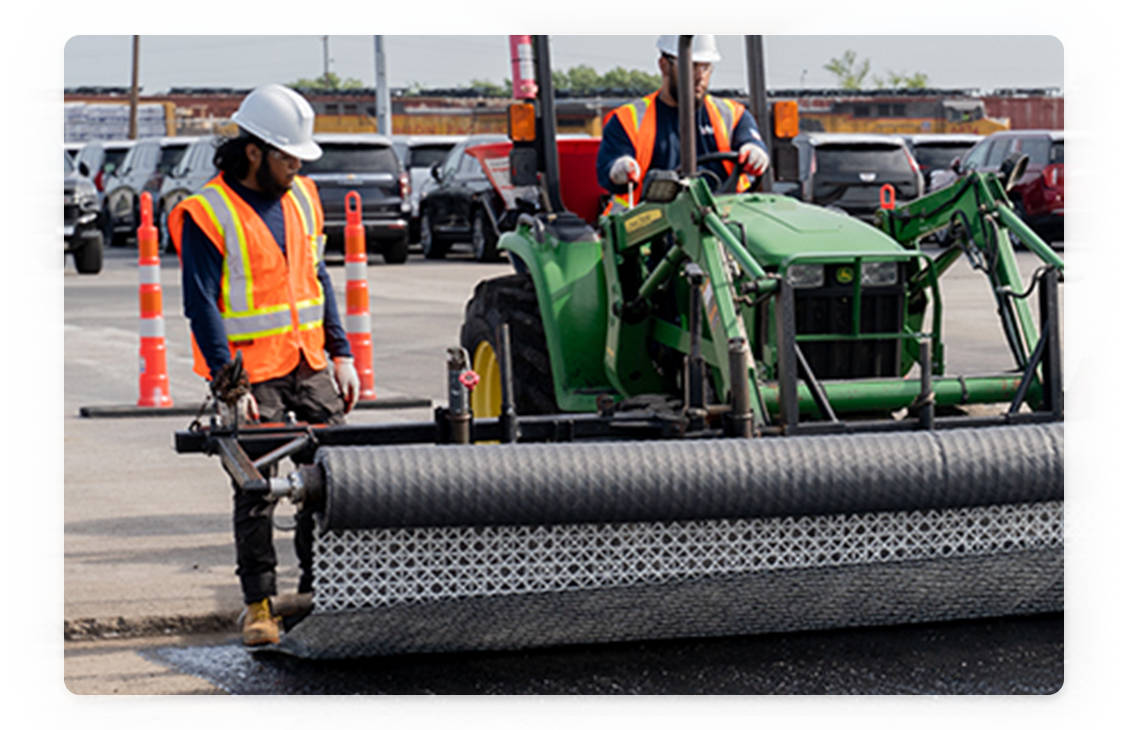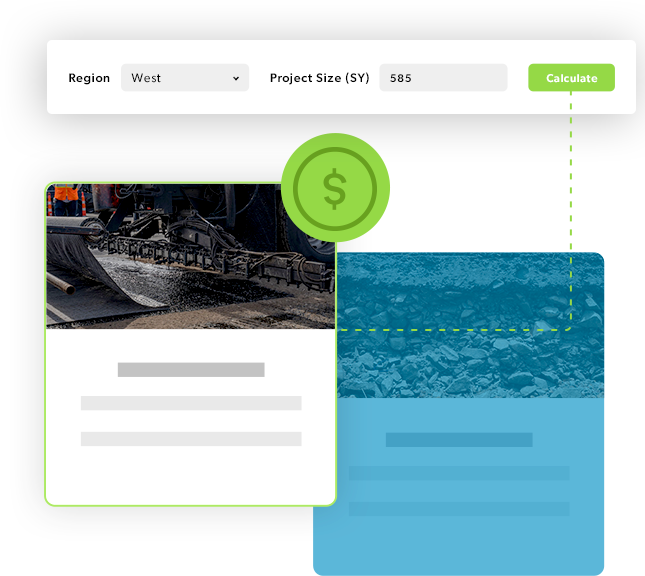
Pavement Optimization with Geosynthetics
Identifying common causes of failure and the benefits to gaining a complete understanding of how to counteract potential short-term and long-term threats to the life expectancy of your pavements and roads is critical. That's why we have outlined a simple explanation of the importance of optimizing your pavement designs with geosynthetics during the pre-construction/design phase, rather than fighting continuous failures and maintenance demands post-construction that can help you avoid costly and time-wasting efforts.
“Roads wear out from the top down, but fall apart from the bottom up”
- National Association of County Engineers
An understanding of short-term and long-term threats to your pavements, roads, or lots and awareness of
available construction techniques
can optimize the potential for a successful solution and minimize unplanned maintenance and repair expenses.
Proper planning during the
design phase can significantly extend the lifespan of roads and parking lots while reducing the overall cost
of the project.
In the dissection of the components of a typical pavement design, the sections include the subgrade, the
aggregate base course, and the asphalt
wearing course. These stand-alone components can significantly vary in quality, starting with the subgrade.
A poor subgrade is the number one cause of pavement failures. Even the best-designed and properly installed pavements can fail if the soil built upon is too soft and weak, resulting in structural issues. When repairing a poor subgrade, resurfacing is not the solution. Removing the pavement, mitigating the soil, putting everything back together, and re-installing the pavement is the primary way to solve the problem. Enhancements to poor subgrades can produce a stiff, workable surface to build on. For example, a high-strength geosynthetic layer at the subgrade helps bridge soft soils in preparation for your base course, avoiding headaches and unnecessary expenses in the future.
Be proactive, not reactive. Understanding the importance of staying ahead of your pavement's natural life cycle is critical to avoid costly damage and time wasted. Improve your poor subgrade strength and durability with soil stabilization solutions using geosynthetics. Geogrids, geotextiles, and cellular confinement have their place, depending on the application, environment, and available building materials, to optimize cost and time. The benefits of geosynthetic reinforcement at the interface between base course and subgrade soil help carry and distribute the stress caused by vehicular loads and minimize subgrade movement due to harsh weather, traffic loading, and climate cycles. When reinforcing subgrade with geosynthetics, this affords an economical and speedy installation versus the costly, conventional chemical stabilization techniques such as lime, cement, or fly ash mixing. The placement of geosynthetic material improves bearing and load carrying capacity, improving the life cycle and performance of your pavements, roads, and lots.

Figure 1a.
The wearing course typically consists of asphalt or concrete. The life of this
section can be extended by use of
asphalt/concrete fibers (within the section) or Asphalt Interlayers, such as fiberglass-reinforced
grids or
geocomposites are optimal for extending the service life of asphalt overlays. Learn more about
Asphalt Reinforcement Aramid Fibers and Asphalt Interlayers

Figure 1b.
The thickness and performance of the base course can be optimized by utilization
of geotextiles, geogrids, or
cellular confinement technologies at the subgrade level. The essence of a healthy pavement section
depends on the structural
integrity of the pavement foundation. This can be achieved through conventional techniques, such as lime
treating the subgrade,
or insertion of a geosynthetic to serve as a mechanically stabilized layer.
Learn more about InterAx Geogrid,
High Performance Geotextile,
Cellular Confinement.
Diving deeper into the role of Asphalt Interlayers in pavement longevity. These interlayers are crucial in enhancing the durability of the wearing course - the top layer of pavement exposed to traffic - by providing an additional protective layer that absorbs stresses and prevents cracks from forming. This not only extends the surface life but also protects the asphalt base course beneath. For high-traffic areas, this means a significant increase in pavement endurance, directly translating to lower maintenance costs and longer service intervals. When used in pavement rehabilitation, particularly in asphalt overlays, these interlayers act as a barrier, preventing the old pavement's distresses from reflecting into the new overlay, thereby ensuring a longer lifespan for the rehabilitated surface.
Geogrids are crucial in forming a mechanically stabilized layer (MSL) at the subgrade level. This layer, created by the interaction between the geogrid and the base course material, significantly enhances load distribution and stability. This is particularly vital in preventing common pavement issues like differential settlement and rutting. By stabilizing the foundation, Geogrids increase the overall health expectancy of the pavement. In challenging environments or where heavy loads are frequent, Geogrids provide a resilient and cost-effective solution, ensuring the pavement remains stable and functional for extended periods, thereby optimizing the investment in pavement construction and maintenance.
Take control and reduce cost by as much as 20 percent, improve construction speed, and provide profitable solutions by saving on recurring expenses using geosynthetics on your next roadway, pavement, and site stabilization project. Learn more about the trusted solutions available to you related to geogrids, geotextiles, and cellular confinement solutions today!
Learn more about these tested and trusted geosynthetic products for your long-term pavement and road
solutions.
Geogrids
Geotextiles
Cellular
Confinement
All
Pavement and Road Solutions
Have a question, give us a call and put us to the test.
GeoSolutions provides dependable results for soil stabilization, earth retention, and soil erosion control projects utilizing geotextiles and geogrids, earth anchors, walls and slopes, turf reinforcement, revegetation, containment and geomembrane liners, and more. Contact Us Now


